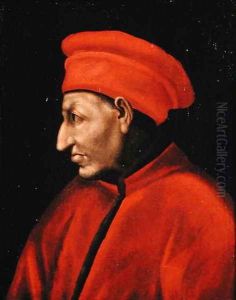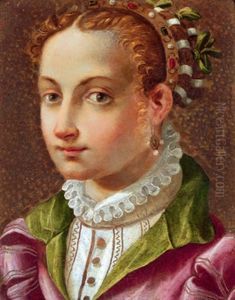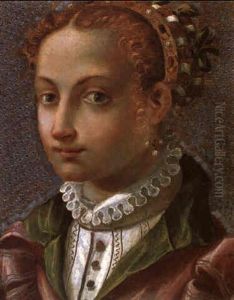Alessandro Pieroni Paintings
Alessandro Pieroni was an Italian architect and painter, born in 1550 in Lucca, a city in Tuscany. His artistic journey began in his hometown but later took him to other parts of Italy and beyond. Pieroni is considered part of the late Renaissance period, which was a time of great artistic development and innovation that bridged the gap between the Renaissance and the Baroque.
During his early years, Pieroni would have been immersed in the rich cultural atmosphere of Tuscany, home to some of the most influential artists and thinkers of the Renaissance, such as Leonardo da Vinci and Michelangelo. His initial training and influences remain somewhat obscure, but he is known to have been active during the latter half of the 16th century, a period that saw the Mannerist style evolve into a more dramatic and complex form of artistic expression.
Pieroni's work was characterized by a combination of architectural and artistic skills. Although more renowned for his architectural contributions, he also made a name for himself as a painter. He was involved in the design of fortifications and civil buildings, reflecting the era's need for both functional and aesthetically pleasing structures. His architectural work would have included the planning of public spaces, churches, and palaces, which often demanded a deep understanding of both engineering and artistic principles.
In 1583, he moved to Florence, where he worked under the patronage of the Medici family, the ruling family of the Grand Duchy of Tuscany and great patrons of the arts. During his time in Florence, Pieroni came into contact with many prominent artists and intellectuals of the day. He contributed to the intellectual and artistic discourse of the period, participating in the design and decoration of significant buildings and possibly influencing the development of Tuscan architecture.
Not much is known about the specific projects Pieroni undertook or the paintings he may have produced. The historical record on his works is limited, and many of his contributions might have been undocumented or attributed to more prominent artists of the time. Despite this, his role in the context of Italian Renaissance architecture and his connection to the Medici family suggest that he was a respected figure in the artistic community of his time.
Alessandro Pieroni passed away in 1607. The lack of extensive records about his life and work has led to Pieroni being somewhat overshadowed by his contemporaries. Nonetheless, his contributions to the field of architecture, particularly in Tuscany, and his service under the influential Medici family, mark him as a noteworthy figure in the late Renaissance period. His legacy would have been carried on through the architectural traditions and stylistic choices that continued to evolve and shape the Italian landscape long after his death.


